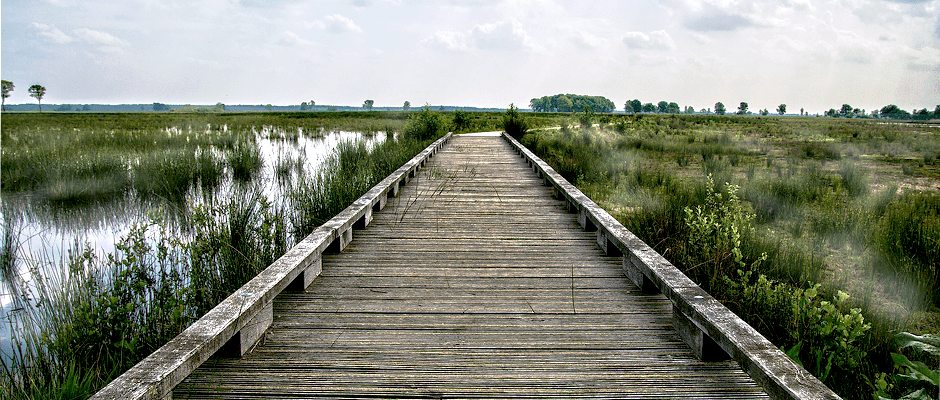Share this article
Committee brainstorms fix for maintenance backlog
The House Natural Resources Committee is discussing how to handle the deferred maintenance backlog in Interior Department agencies. Interior has around $16 billion in deferred maintenance projects, $11.6 billion of which are within the National Park system.
In many parks and refuges, managers have closed areas after deeming buildings or trails too dangerous or because they have fallen into disrepair. Unsafe roads and trails can impede public access to federal lands, and neglected facilities like closed bathrooms negatively impact visitor experiences.
After national park visitors reached record numbers in the years around the Park Service’s 2016 centennial, facilities are facing increasing strain. The maintenance backlog has been a growing concern for years, and both Congress and the previous administration have worked to come up with solutions.
At a March 6 session, committee members questioned how the problem became so severe. National Parks Conservation Association representative Steve Iobst explained that a lack of operational funds has made it difficult for parks and refuges to implement routine maintenance needed to keep assets in good repair or replace those that are aging.
According to P. Daniel Smith, Deputy Director of the National Park Service, 40-45 percent of Park Service assets are in deferred maintenance. Roughly half of that portion is made up of roads and bridges near the end of their operational lifespans.
The fiscal year 2019 executive budget proposal called for the creation of a Public Lands Infrastructure Fund, which would fund National Park Service, U.S. Fish and Wildlife Service and Bureau of Indian Education repairs using dollars collected from energy development on public lands. The administration projects that the fund could raise $18 billion over 10 years to address deferred maintenance concerns.
Ranking member Raúl Grijalva, D-Arizona, expressed concern about linking the well-being of national parks and refuges with energy development in light of cuts to operation funding in recent years. He also questioned whether acquiring new lands contributed to maintenance concerns. In the budget, the proposed cuts to the Land and Water Conservation Fund were justified by allowing DOI to focus resources on current lands rather than new acquisitions.
Iobst said that he believes several DOI agencies need the ability to both maintain existing lands and purchase new ones to fulfill their missions. In some cases, acquiring new lands can lower operations and maintenance costs. Inholdings can complicate management, so purchasing those lands can sometimes reduce future operational costs.
Chairman Rob Bishop, R-Utah, questioned why those three agencies were prioritized over others in the department, particularly the Bureau of Land Management, which manages more than 245 million acres of public lands.
Smith explained that these selections were for the preliminary rollout of the program. Interior Secretary Ryan Zinke has expressed particular interest in promoting outdoor recreation and public access. National parks and refuges receive the majority of visitors. The Bureau of Indian Schools was chosen citing safety concerns that might affect students.
Steve Guertin, deputy director of the U.S. Fish and Wildlife Service, mentioned that giving USFWS the authority to use compensation from those responsible for damages to fund repairs rather than appropriated funds would help reduce deferred maintenance.\
In their opening statements, both Dan Puskar of the Public Lands Alliance and Jason Rano of the National Parks Foundation stated that private donations and partnerships are an important aspect of addressing the problems that face national parks and other public lands. However, they also emphasized that philanthropy was not a suitable replacement for adequate federal funding.
“Philanthropy is not a panacea for deferred maintenance.” Rano said. “Through our fundraising campaigns, the foundation has found that donors are enthusiastic about projects in national parks that repair, rehab or build trails as well as restoring historic buildings and memorials. What we haven’t found are donors willing to support roads, bridges, sewer systems, water pipes, or other hard infrastructure. This type of maintenance is viewed by donors as an inherently governmental responsibility that should be funded by Congress.”
Rep. Bruce Westerman, R-Arkansas, used Hot Springs National Park as an example of the success of historic leases. Several historic bathhouses in the park closed and fell into disrepair over the years until the Park Service started historic leases for creative reuse. Now they hold the park visitor center, museums and the only brewery on National Park lands. Unfortunately, Smith said, the costs and requirements of these lease projects likely do not make them viable in every park.
Other potential funding solutions discussed by the committee included lengthening parks concessions contracts from 20 years to 30 in an effort to make them more attractive to private investors. The Park Service is also evaluating changes to fee structures. However, last year’s proposed fee increases to some of the most popular parks were criticized as being cost prohibitive for many visitors. Solutions that might hurt visitation numbers could also be detrimental to gateway communities outside parks that rely on tourism revenue.
The hearing on March 6 was the first of a series intended to address the DOI maintenance backlog. The committee will meet again Thursday 10 a.m. to discuss the backlog and other DOI priorities with Zinke.
Header Image: Aging and damaged roads, bridges and boardwalks can prevent the public from accessing trails or attractions on public lands, but agencies often do not have funds to make necessary repairs.








